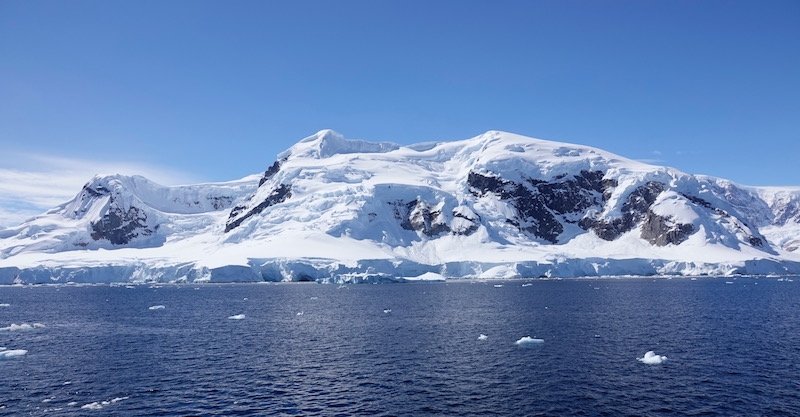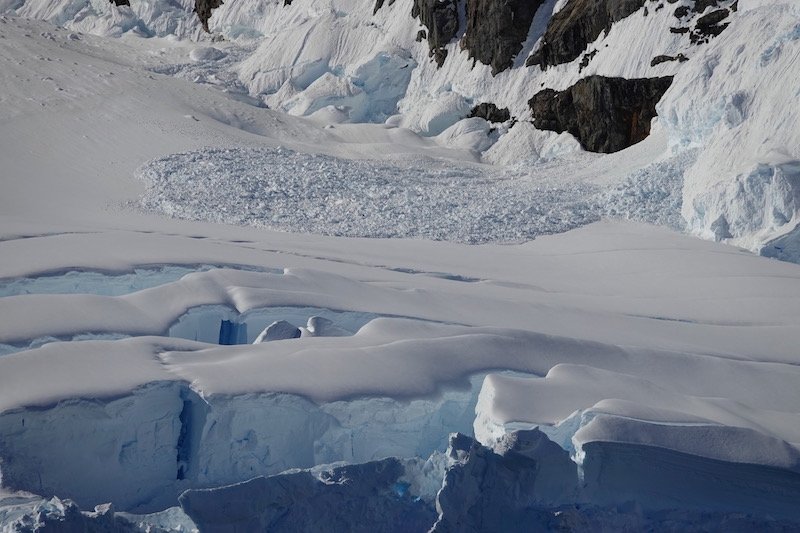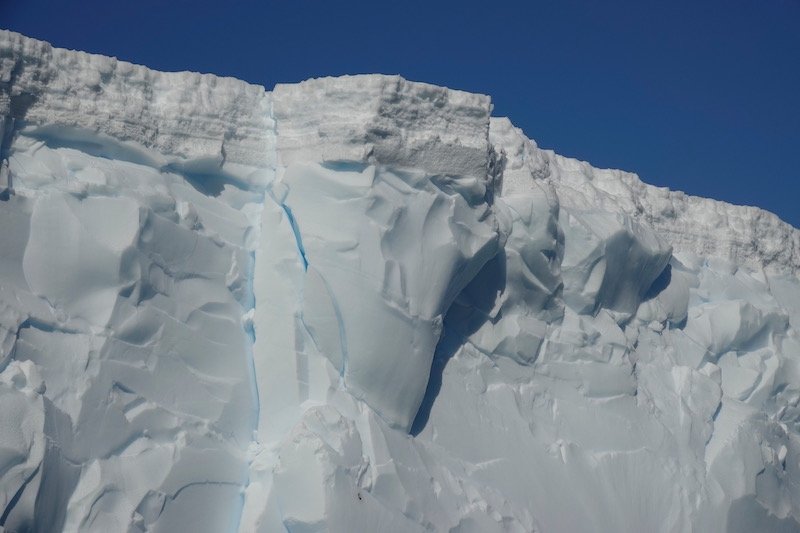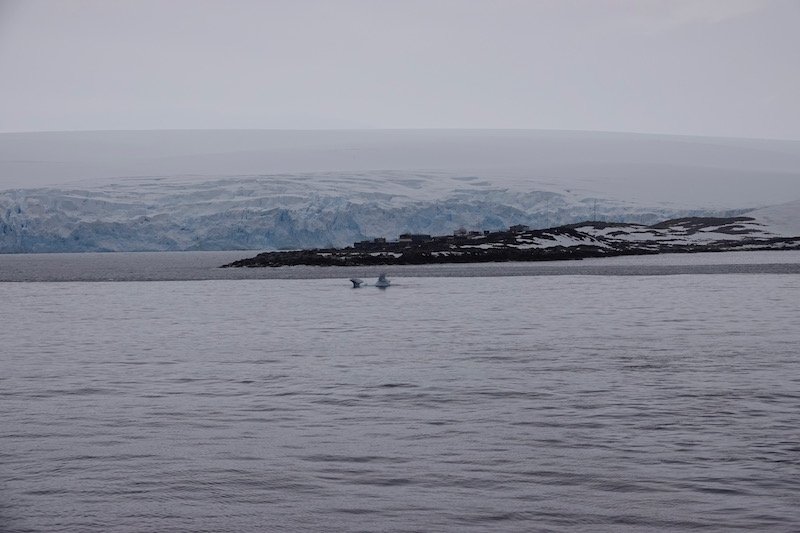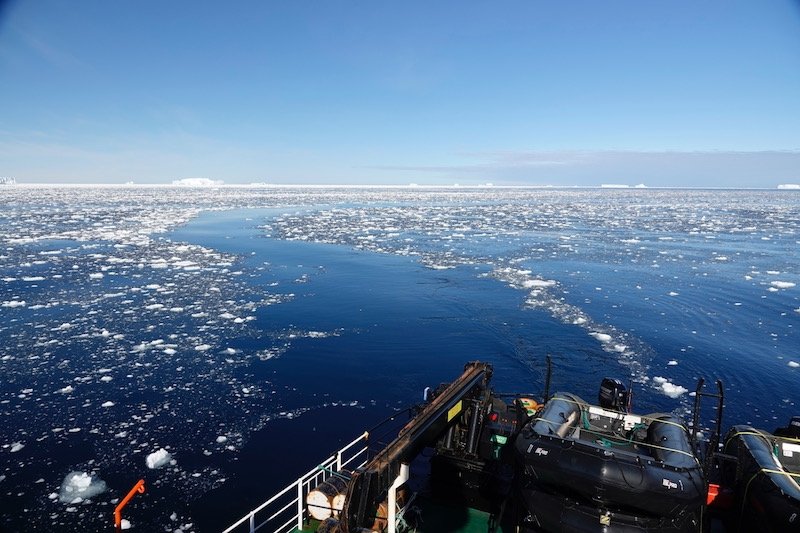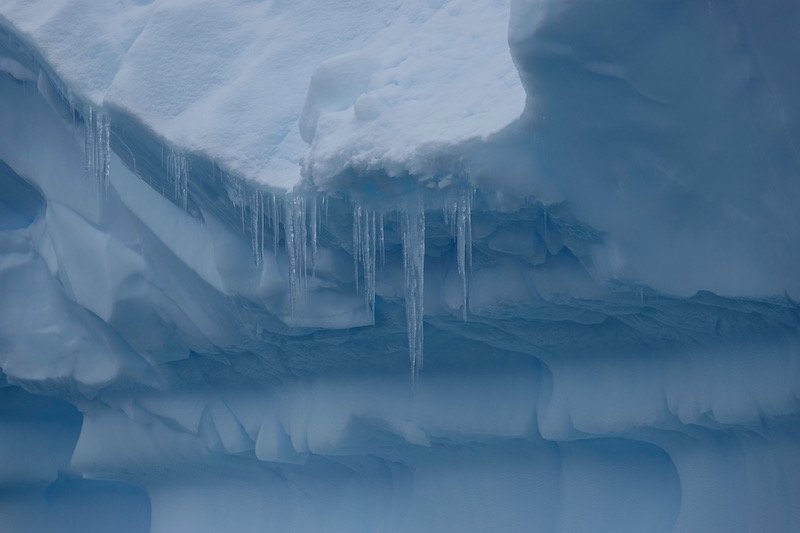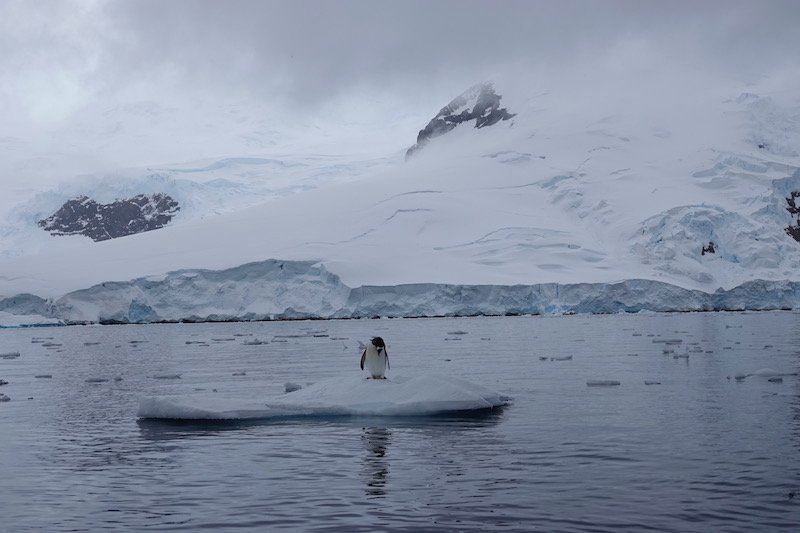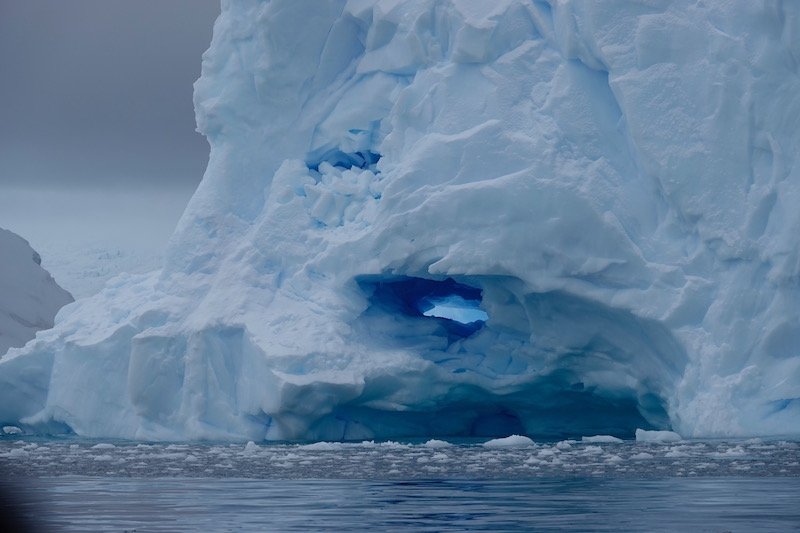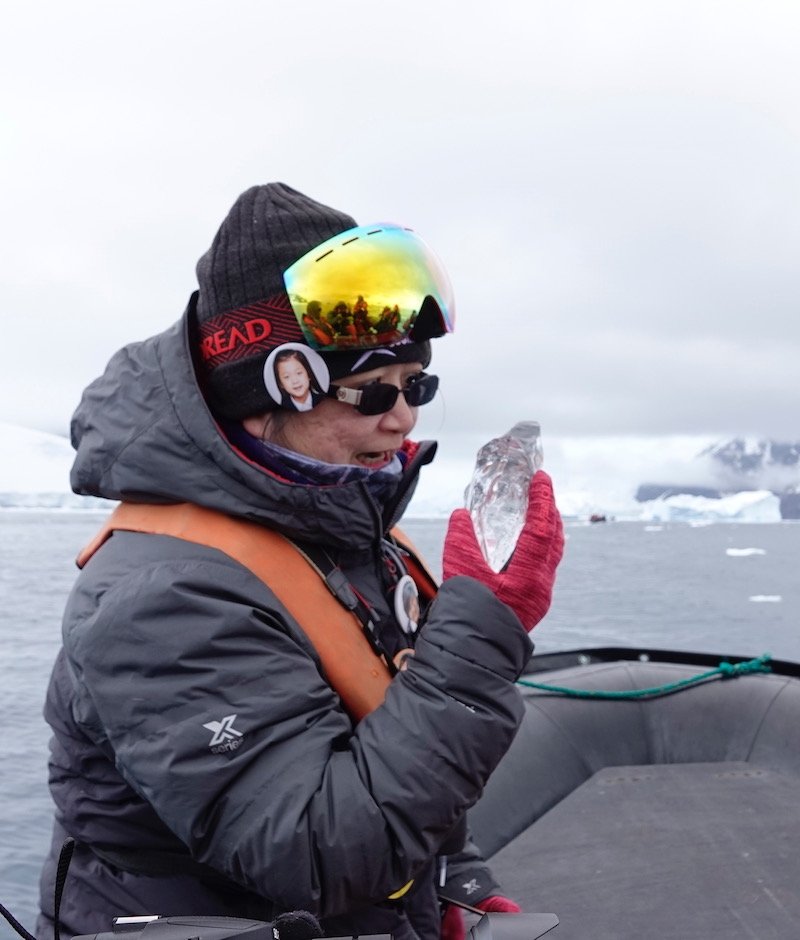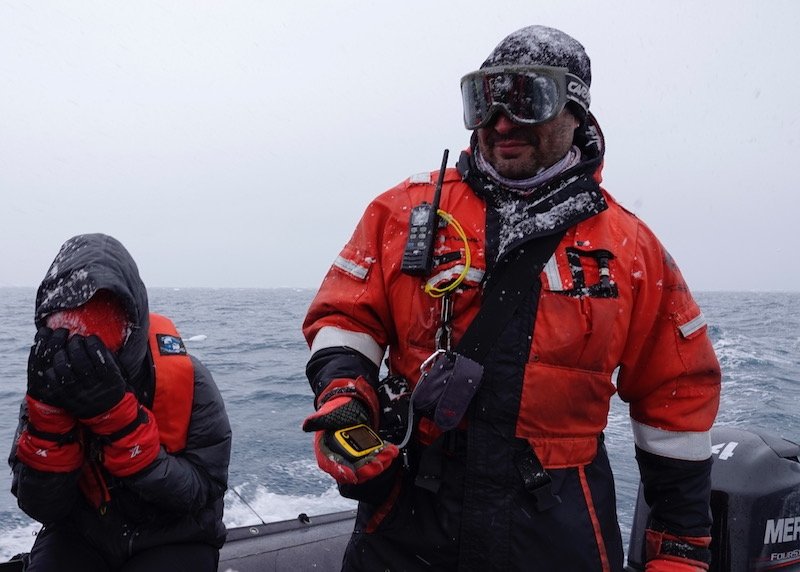Displaying items by tag: sea ice
Homeward Bound 8 - The A (for Antarctica) factor
Originally, we were supposed to go further south to Verdansky Station, Prospect Point and Petermann Island but once again the sea ice and the weather are against us and it turns out there will be no landings for several days. This can be hard for people to understand in today’s world where travel is seen as relatively straightforward and we can cross the globe in 24 hours by jet. We are used to getting to places on time and can get annoyed if we are delayed for a few hours or redirected.
In Antarctica travel is still very much determined by the elements. Sea ice is still a real danger to shipping, just as it was for early explorers and sealers and whalers. Most ships have ice strengthened hulls but they are still only able to break through relatively small depths of sea ice, and ice can still damage their hulls. Ships can still get stuck in ice, like Shackleton’s Endurance which got stuck, squeezed and eventually sank in 1915. Even today rescue operations are time consuming, expensive and can divert icebreakers from their primary tasks of resupplying stations or doing science. Plus no captain wants to get stuck and have to call mayday.
While we still can’t control the weather, the main advantage we have today is that modern communication and satellites mean that we know what the sea ice looks like before we get there. We also have much better ideas of the weather systems that are on the way. And the ship’s captain can communicate with other ships in the area to find out what conditions are like at sea level. This means that the captain and voyage leader are constantly planning ahead and revising and adapting our voyage plan to ensure we get the best experience and don’t get stuck. As an Antarctic scientist I am well aware of the work that goes in behind the scenes to get expeditioners to stations and back. Because our plans are changing we ask Monica to explain to everyone what has been happening behind the scenes and why we can’t go ashore for a few days. She also gives us a lecture on ice.
Instead of going to Verdansky, we moor up and have a zodiac cruise where we observe sleeping humpback whales, seals and penguins. There are some spectacular glaciers and we see an avalanche as a huge chunk of ice falls off the face of the cliffs. We can also see how fast some of these glaciers are retreating with climate change.
The next day the ship takes up to the edge of the ice (Flanders Bay) and we see the spectacular variations in sea ice forms including the thin films of grease ice and the wonderful fluffy disks which are called pancake ice. We also see some massive icebergs (kilometers long) that have calved off the retreating glaciers.
Just last week, a ship searching for the wreck of Endurancewas forced to abandon its search because of heavy sea ice. They also lost their autonomous underwater vehicle because of inclement weather and bad sea ice conditions.
Homeward Bound 7 - Palmer, peatmoss and politics
We were booked to go ashore at Palmer Station, the American base on Anvers Island, on the 9thJan, but the brashy, sea ice had blown in around the station making it too risky for the Ushuaia staff to take zodiacs in. So about 10 expeditioners from Palmer come aboard the ship to tell us about the science that is happening on the base.
I am really happy to see that one of my colleagues from the US Dr Zicheng Yu(Zic) from Lehigh University, is one of those researchers. Like my group, Zic is using stable isotopes of carbon, and also oxygen, to understand how plant growth is affected by climate change in Antarctica. Specifically, Zic is a paleoecologist and works with peat mosses. These are mosses that have been growing for thousands of years in wet, boggy sites and the older mosses become compressed and peaty as the plants above press down. The wetness helps to preserve the moss which means it can contain climate records that go back for thousands of years. Zic has sampled such mosses from Patagonia and is interested in how far South the peat mosses extend. The Antarctic mosses we work with are younger, hundreds, rather than thousands of years old, but we are working with individual plants, not peat. In peat there can be layers and layers of different mosses and even grasses and other plants as you delve down into the core. Our individual plants are only a few centimeters tall whereas peat cores can be meters deep. It’s all a matter of scale. In East Antarctica the mosses grow a few millimeters each year, whereas on the peninsula they might grow a whole centimeter in a year!
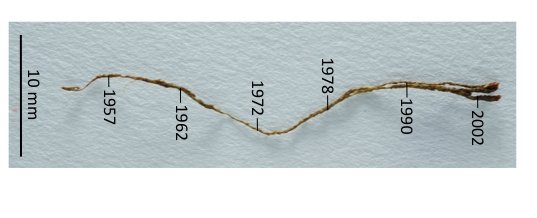 Zic and I last met at the SCAR Open Science meeting in Davos in June, when Dr Melinda Waterman and I spoke at the same session as him. Zic tells everyone on the ship about the work that we are doing on Antarctic moss which is great visibility for me! He also has a University research position in China and so I introduce him to the Chinese HB3 team.
Zic and I last met at the SCAR Open Science meeting in Davos in June, when Dr Melinda Waterman and I spoke at the same session as him. Zic tells everyone on the ship about the work that we are doing on Antarctic moss which is great visibility for me! He also has a University research position in China and so I introduce him to the Chinese HB3 team.
After the formal session we go onto the front deck for photographs and also get to talk to the Palmer staff. It’s really nice to meet a range of expeditioners including scientists and the staff who keep the station running and support the researchers on the base.
All the expeditioners at Palmer were affected by the US Government Shutdown. Staff employed by the government were working for no pay and having trouble ordering supplies for the station for the coming season. Some of the scientists cannot get to their sites to do research, because the public servants in the US who prepare the permits are on furlough and can’t process the permits. This is such a waste of everyone’s time and is ultimately a waste of the NSF grant money. I am hoping that some of this has resolved since we got back and Zic and his colleagues got their work done. Lets hope the rest of the season is productive for them all.
Palmer is part of the Long-Term Ecological Research (LTER) Network with a study area extending North and South of Palmer from the coast to several hundred kilometers to the west side of the Antarctic Peninsula.
Homeward Bound 6 - Glacier zodiac cruise in Anvord Bay, near Neko Harbour,
We were supposed to go ashore at Neko Harbour but it was ice bound. The wind has blown the sea ice close to shore and so we can’t get ashore in the zodiacs. It’s too dangerous to risk puncturing them.
So, we have a glorious glacier cruise and see more spectacular ice formations both cascading off the continent and in the icebergs and sea ice.
We collect clear, black ice for the bar and see glacial deposits where rocks and silt are layered into the icebergs.
We also find some moss on a Point near Neko Harbour. I am hoping it’s a new description and we can go back to study it! Although it’s on a pretty sheer rock face so it would be tough to collect. I think we would need a drone to collect samples for us.
We were on an iceberg cruise on the zodiac and our guide was Juan, a fellow plant enthusiast so when I spotted green through my binoculars and asked if it was moss or algae, he was happy to get closer to check it out. It was on a huge volcanic plug with full length dykes running down the steep cliffs.
On one side was a stream of moss cascading down terraced steps in the rock face. Very exciting. Just above the moss we spotted 2 Antarctic tern chicks which were probably helping to fertilise the moss stream.
Then of course we were miles from the ship and the weather closed in so it was foggy on the way back and for the first time we had to navigate back to the ship on GPS. It was cold and felt properly Antarctic in the zodiac and we had to keep an eye out for bergy bits of sea ice. Very exciting for us all because it felt a bit intrepid, but I didn’t want to get a reputation for being the last one back on the zodiacs and holding up the ship. Don’t want to set a bad example!


